*The contents of this article are human-created.*
This post may contain affiliate links. Please see our full disclosure for details.
Learn how to make Easy Homemade Oat Flour with a blender! There's no need for a food processor or fancy equipment. Plus, it's cheaper, quick and more nutrient dense.
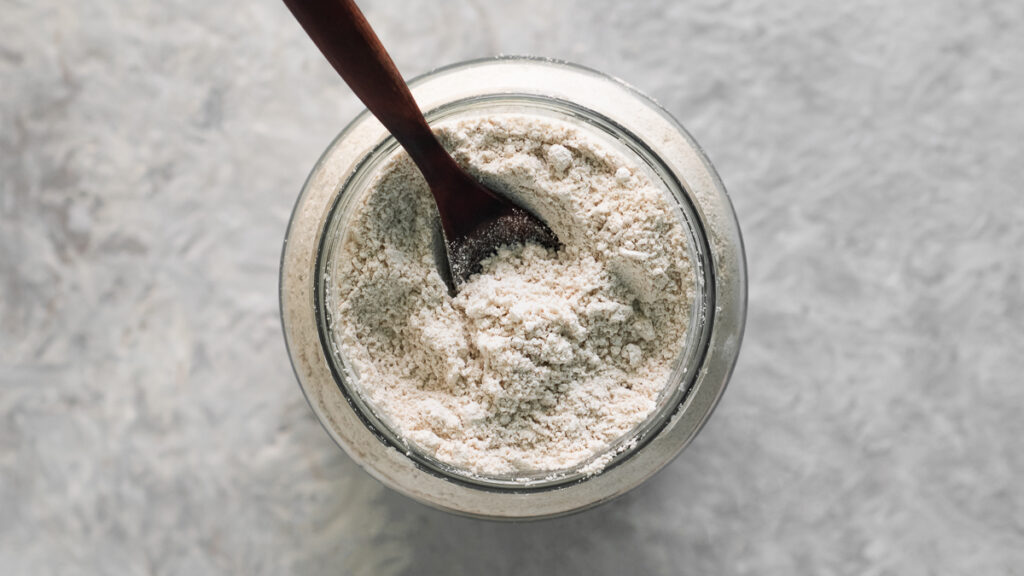
*Nutrition Disclaimer: The information provided on this site is designed for educational purposes only. You should not rely on this information as a substitute for, nor does it replace professional medical advice, diagnosis, or treatment. Please read our disclaimers page for more information.
Jump to:
- Why Make Homemade Oat Flour?
- Nutritional Benefits of Oat Flour
- Seasonal Benefits of Oat Flour
- What Type of Oats Should You Use to Make Oat Flour?
- How to Calculate Oat to Flour Ratio
- What You'll Need
- How to Make Homemade Blender Oat Flour
- How Long Does Homemade Oat Flour Last?
- What to Make with Homemade Oat Flour
- More Homemade (From-Scratch) Recipes
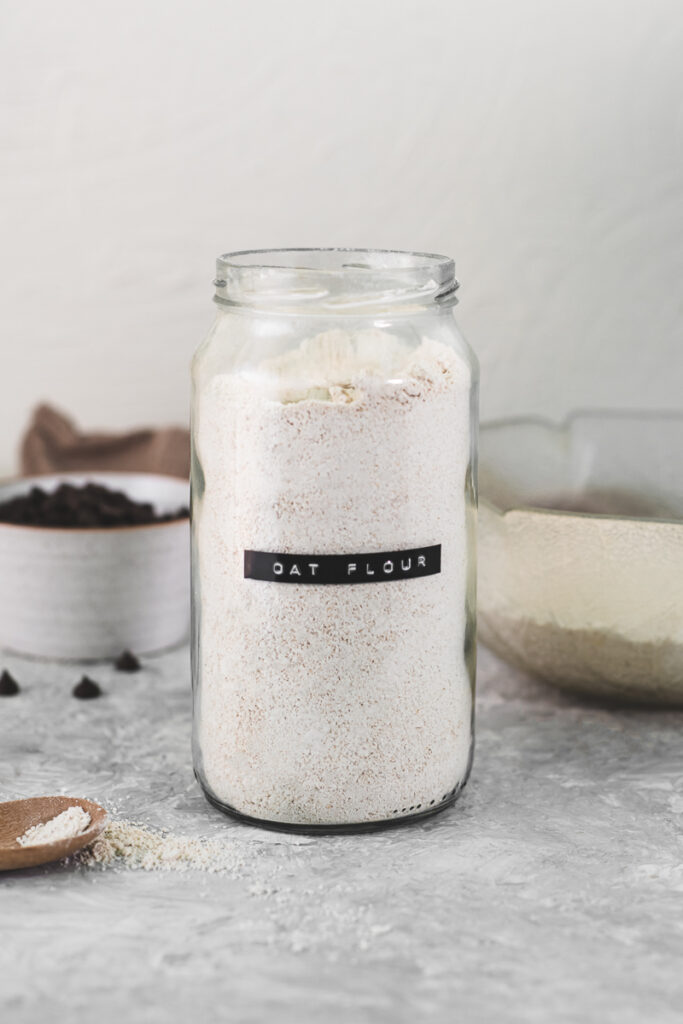
If you've ever wondered if you could just blend your rolled or quick oats into flour, you guessed right! Making Homemade Oat Flour really is that simple. In fact, I don't think I've ever purchased oat flour because it's more convenient to simply blend up some oats that I already have on hand.
Why Make Homemade Oat Flour?
Okay, so you might be asking if homemade oat flour is actually worth the effort when you can just buy it. Here are three reasons why it definitely is worth the few minutes it takes to make.
1. It's Quick!
It takes barely any time at all to make oat flour! It zips up and is ready to use in just a minute. In fact, Homemade Oat Flour has saved me from running out to the store plenty of times. How about that for convenience!?
2. It's More Cost-Effective
Oat flour can be significantly more expensive to purchase than old-fashioned, quick oats and groats. It's also more cost-effective to buy oats in bulk rather than multiple smaller bags of each. Plus, you can just blend what you need, so there's no letting large bags go to waste.
3. It's more nutrient Dense
If you're making your oat flour as needed, it contains more nutrients! The longer flour sits on a shelf, the more oxygen, heat and light it is exposed to. All of which can destroy beneficial nutrients. And even worse, turn fatty acids rancid.
With store-bought flours, we have no idea how long they have been sitting on the shelf before we even get them home. So, at least with homemade flour, you know exactly how long it's been stored.
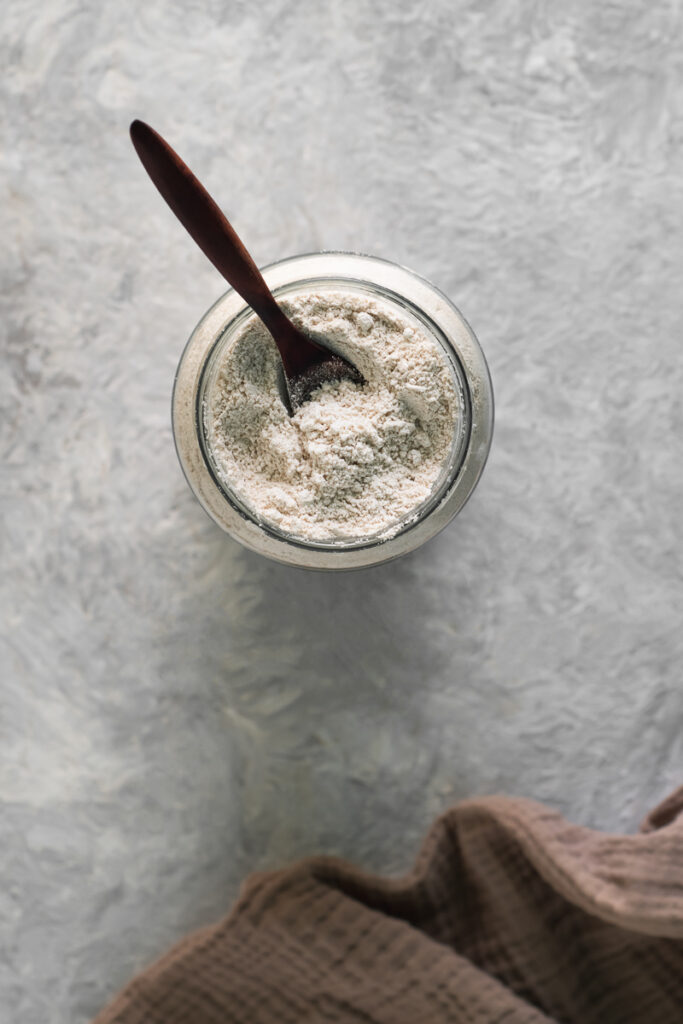
Nutritional Benefits of Oat Flour
Oat flour is a great non-glutenous flour that provides many nutritional benefits.
Great Source of Heart-Healthy Fibre
If you're looking to add more fibre to your diet, using oat flour can be a great option! It contains beneficial dietary fibre that's great for lowering cholesterol.
Good Source of Vitamins & Minerals
Oats are a great source of many vitamins and minerals, including magnesium, selenium, iron, vitamin K, silica and folate.
Gluten-Free
Another great thing about oat flour is that it's non-glutenous. And better yet, you can use certified gluten-free oats to make sure they aren't contaminated with any wheat particles.
It is a little thicker than wheat flour, and some ratio adjustments need to be made when substituting. However, I find it has a much nicer flavour than some other gluten-free flours. It offers a deeper, nuttier flavour than wheat, which makes for extra delicious baked goodies like homemade graham crackers!
Contains Many Restorative Properties
Oats have long been used as medicine in many cultures and traditional healing practices. Along with being beneficial to heart health, they also offer restorative properties to the reproductive system, nervous system, digestive system, connective tissue and bone health. Not to mention, they are also a great source of a rare group of anti-inflammatory antioxidants, Avenanthramides. You can learn more about the health benefits and restorative properties of oats on my homemade granola blog.
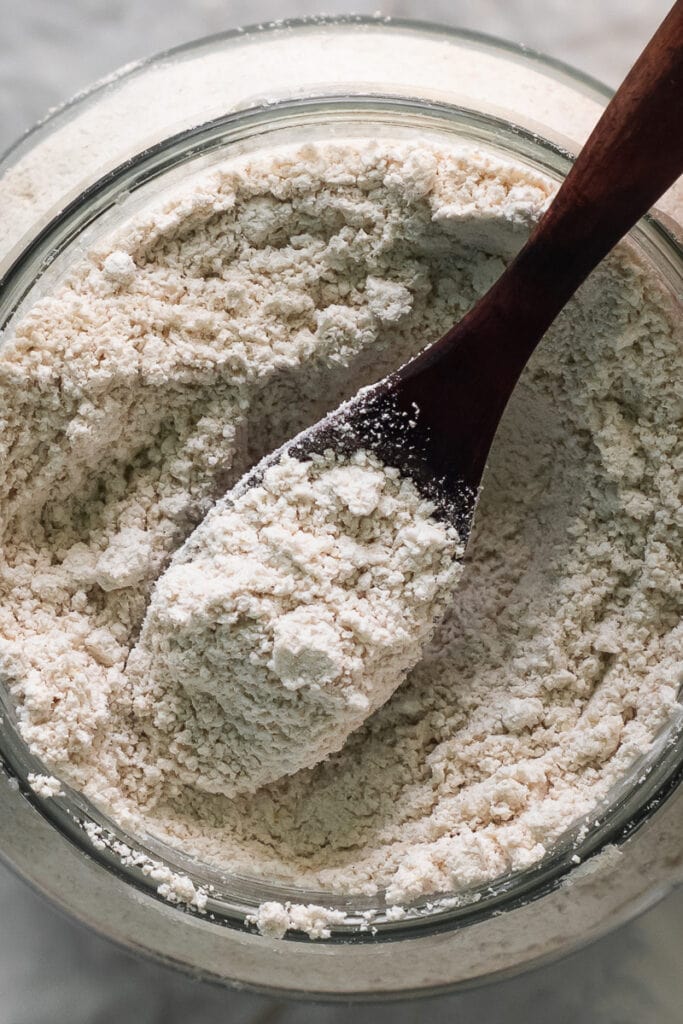
NUTRITIONAL TIPS
Oats are often a heavily sprayed crop. So, make sure to use organic to make this Homemade Oat Flour even healthier! You can learn more about the benefits of choosing organic here.
If you are celiac or sensitive to wheat, make sure to choose gluten-free oats as well! Oats are often grown and hulled alongside wheat and are found to have cross-contaminated particles. Certified gluten-free oats are grown and processed in plants free of wheat and glutenous grains. One Degree's sprouted rolled oats are my favourite to use. They are organic, certified gluten-free and glyphosate free! (Affiliate link)
Seasonal Benefits of Oat Flour
Autumn is a time when white foods like oats (and other grains), turnips, potatoes, radishes and apples are in season. This is a great time to fuel up on these foods.
Winter is also a great time to consume oats since they circulate warmth throughout the body while expelling cold and dampness.
Spring, Summer & Harvest
Spring, Summer & Harvest is a time when the energy-building properties of oats can help us power through the more active seasons of spring and summer. Oats also give us that sweet taste that nourishes us during harvest season.
What Type of Oats Should You Use to Make Oat Flour?
You can use old fashion rolled oats, quick-cooking oats and even oat groats to make homemade oat flour. To get a traditional finely ground flour texture, I suggest using quick-cooking or old-fashioned rolled oats.
Quick-Cooking Oats
Quick-cooking oats are the easiest to blend up (with rolled being a close second). If your blender isn't high-powered, quick-cooking oats will probably be your best option if you're looking to make a fine flour.
Rolled & Quick Cooking
Old-fashioned rolled oats blend up just as easily as quick oats if you have a high-powered blender. There really isn't much of a difference, except rolled oats contain a bit more fibre than quick.
Oat Groats
Now, if you're looking for the most fibre in your flour, it's groats for the win! However, they tend to yield more of a meal than flour, with a slightly gritty texture.
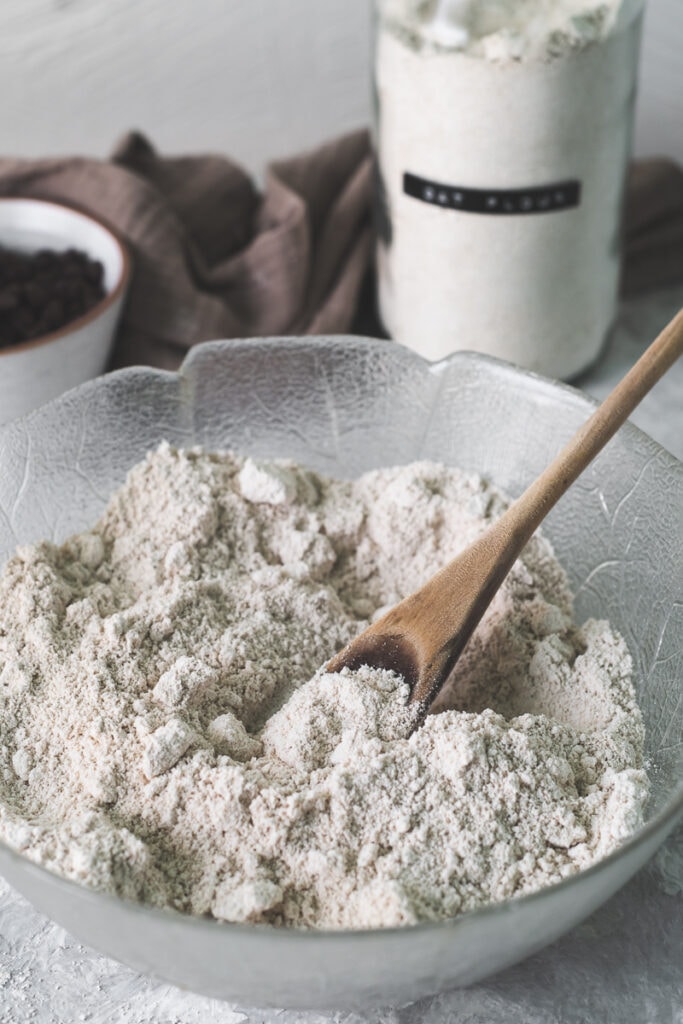
How to Calculate Oat to Flour Ratio
When blending oats into flour, you will lose some volume. The general rule of thumb when making oat flour is that you will get about ¾ of the amount of (rolled or quick) oats used. Therefore, when using two to five cups of oats, your flour yield will typically be about one cup less than the amount of oats used.
For example, if you use four cups of oats, you will get about three cups of flour. If you blend a cup or less, you may lose around a quarter cup.
Other Factors to Consider
That being said, there are a couple of other factors to consider when calculating how much oats you need. The type of oat and how long you blend can play a role in the amount of volume your flour yields.
How Long The Oats Are Blended
One thing to consider when making oat flour is that your yield can vary depending how long you grind your oats. The longer you let them blend, the finer the flour will become. Finely ground flour will yield less volume than roughly ground flour.
If you have a high-powered blender, about thirty seconds will produce medium-fine flour. If you continue to blend for a minute or longer, you will get super-fine flour.
What Type of Oats Are Used
Another thing to consider when making homemade oat flour is what type of oats you are using. I find you don't lose as much with quick oats. Since they are already ground down a little, you don't have to blend them very long to get nice, fine flour.
Rolled oats require a bit longer of a blend which can result in a slightly smaller yield. On the other hand, oat groats will yield about double the amount of flour!
What You'll Need
All you need to make Homemade Oat Flour is oats and a blender! You can also use a food processor if you have one. Or, if you only need to make a cup or two, a single-serve smoothie blender or mini food processor will do.
- Blender
- Measuring Cup
- Oats
How to Make Homemade Blender Oat Flour
As mentioned above, blending oats into flour is as simple as that! Watch the video to see how easy it is.
Time needed: 1 minute
- Measure
First, measure out four cups of rolled or quick oats and pour them into your blender jug.
- Blend
Fasten the blender lid and blend the oats for thirty to sixty seconds. Or until they have turned into a fine flour. The longer you blend, the finer the flour will become.
Turn off the blender once your flour is the texture of your preference. I find it's easiest to use a silicone baking spatula to remove the flour from under the blender blades. Use your flour right away, or store it for convenience!
How Long Does Homemade Oat Flour Last?
Homemade Oat Flour will store for up to three months in a cool pantry, cupboard or fridge. You can also store it for up to 6 months in the freezer.
What to Make with Homemade Oat Flour
Oat flour is one of my favourites to bake with, and not just because of its health benefits!
There are many ways to use oat flour, from bread to pastries, cookies, crackers and more! Plus, it makes a wonderful gluten-free flour (if gluten-free oats are used, of course). With its rich, nutty flavour, it makes especially delicious gluten-free graham flour crackers!
THIS RECIPE IS...
More Homemade (From-Scratch) Recipes
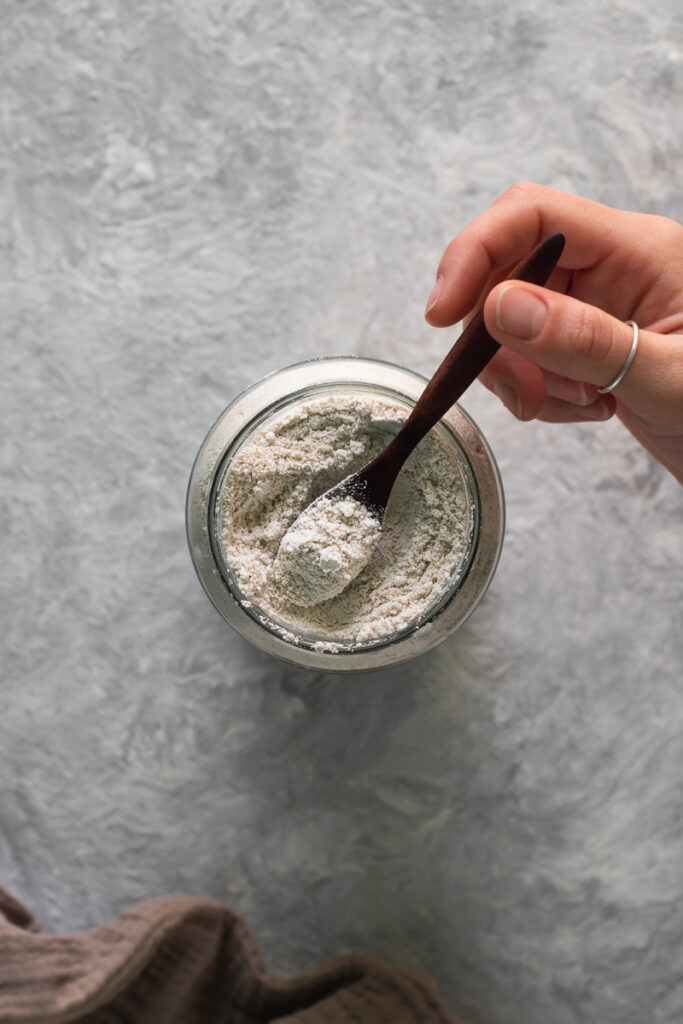
If you try this Easy Homemade Blender Oat Flour recipe, let me know how it turns out by leaving a comment and/or a rating below! And make sure you're following along on Pinterest, Instagram and Facebook for more wildly nutritious recipes!
Easy Homemade Blender Oat Flour
Print RecipeEquipment
- Blender
Ingredients
- 4 cups Rolled Oats (Or Quick)
Instructions
- Measure out four cups of rolled or quick oats and pour them into your blender jug.
- Fasten the blender lid and blend the oats for 30 - 60 seconds. Or until they have turned into a fine flour. The longer you blend, the finer the flour will become.
- Turn off the blender once your flour is the texture of your preference. I find it's easiest to use a spatula to remove the flour from under the blender blades.Use your flour right away or store it for convenience! It will store for up to 3 months in a cool pantry, cupboard or fridge and up to 6 months in the freezer.
Notes
Watch the Video!
Nutrition
This post contains affiliate links. As an amazon associate and affiliate of other trusted brands, I earn from qualifying purchases. I only recommend products and brands that I trust and use myself. All opinions and information provided have come from my own experience and research. Please read my full disclosure and privacy policy for more information.

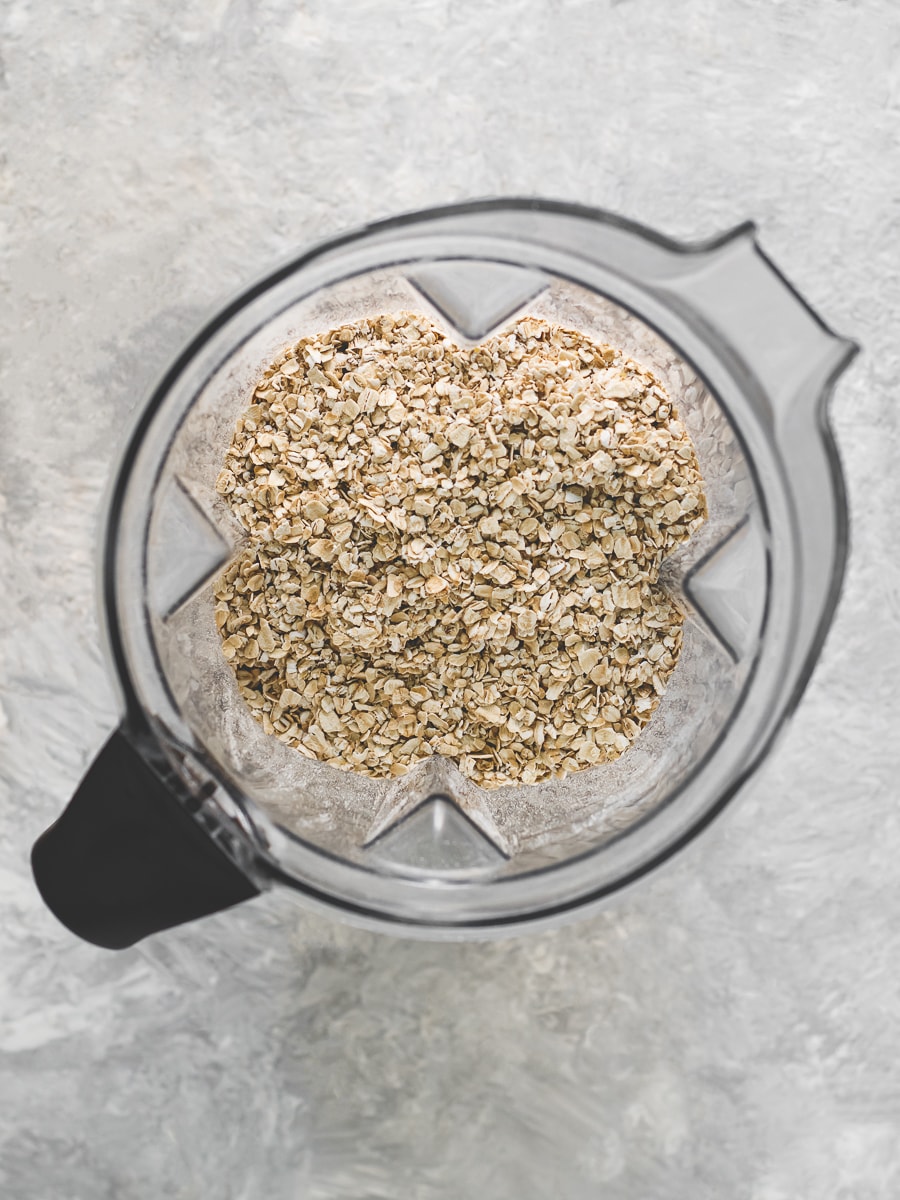
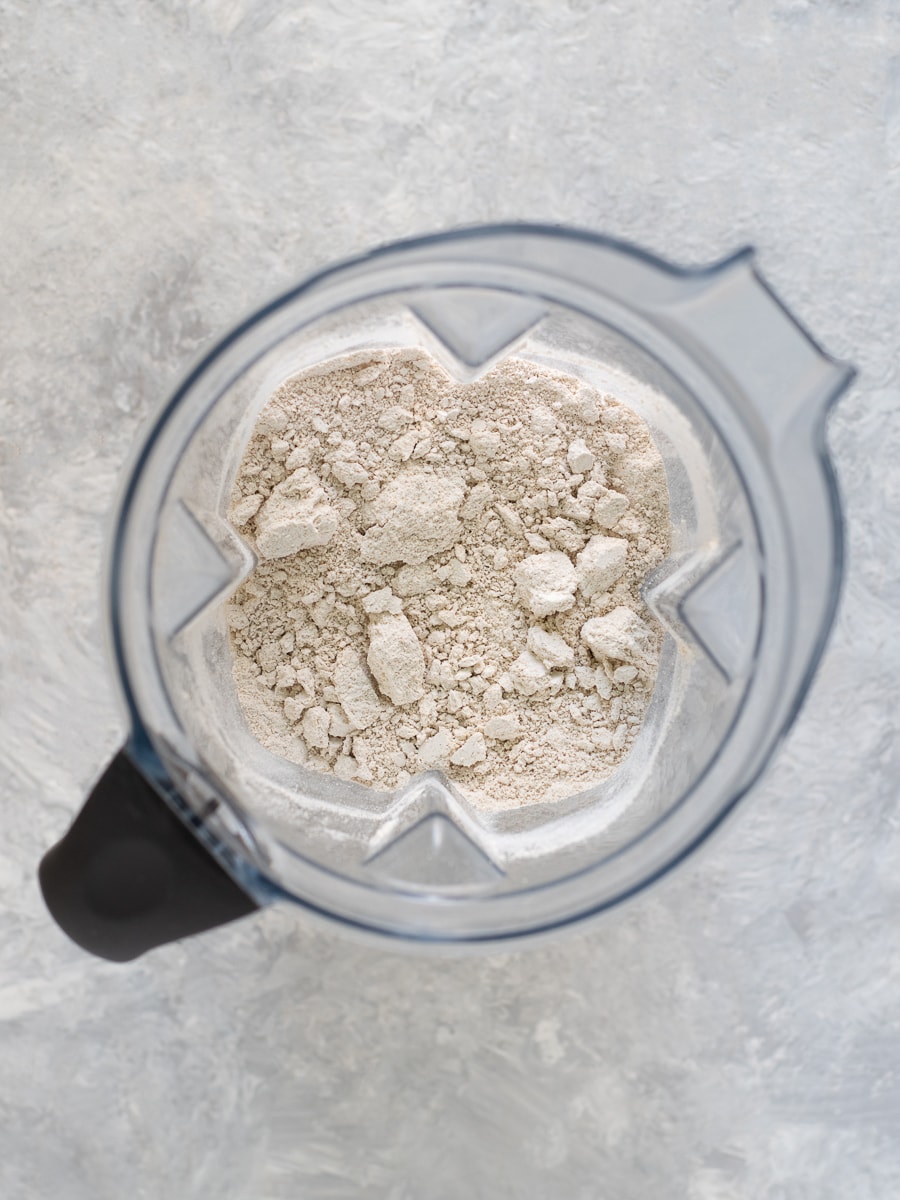
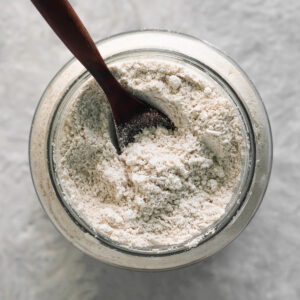
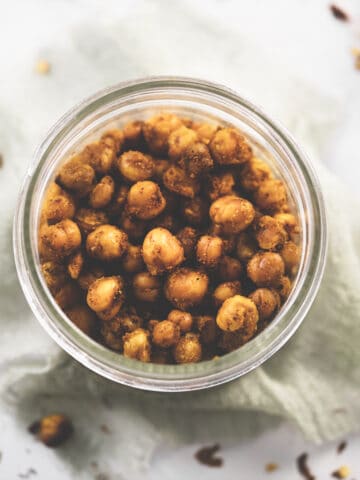
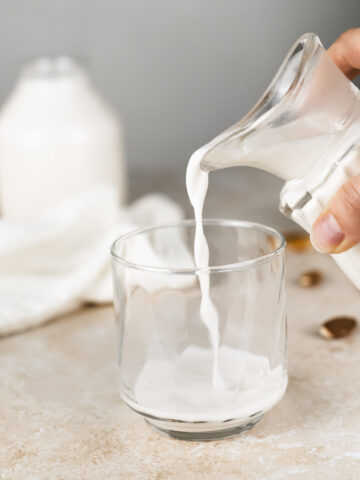
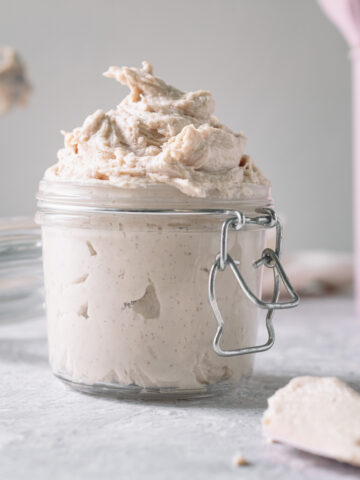
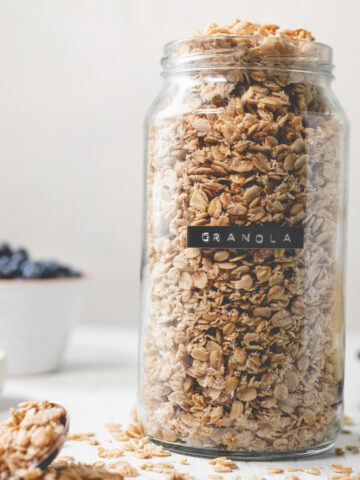
Rate this Recipe & Share How it Turned Out!